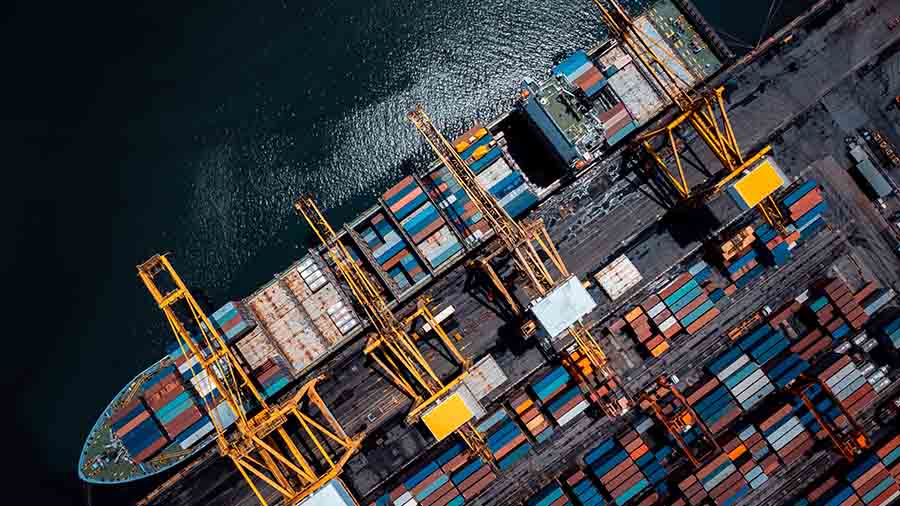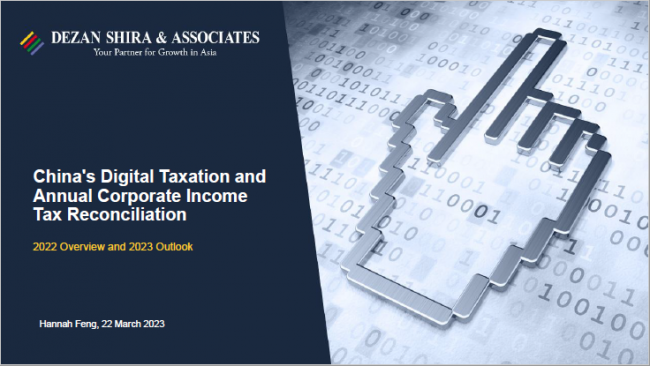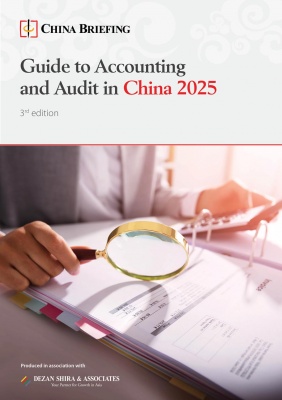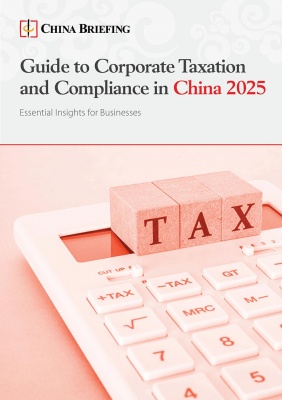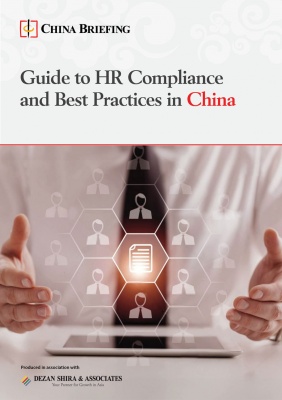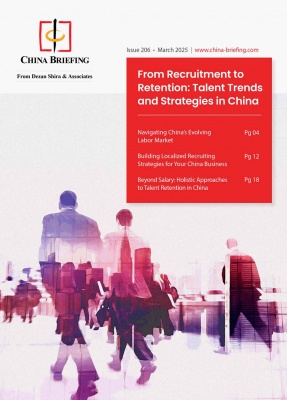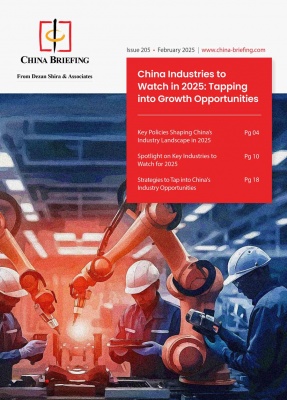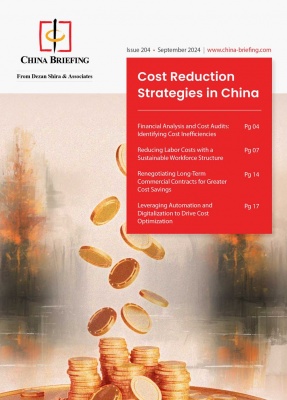China Monthly Tax Brief: March 2025
In this China Monthly Tax Brief for March 2025, we highlight significant taxation developments for businesses and individual taxpayers. Among others:
- The newly effective China-Italy DTA introduces reduced withholding tax rates on dividends, interest, and royalties, enhances tax dispute resolution mechanisms, and aims to prevent tax evasion, promoting stronger bilateral economic
- China has extended the stamp tax exemption policy for offshore trade contracts in designated free trade zones until December 31, 2027, to boost offshore trade and attract international businesses.
- The new interim measures for refined oil tax-related product testing, effective March 24, 2025, standardize tax-related product testing for refined oil, enhance excise tax enforcement, and introduce stricter compliance requirements for businesses.
- In response to increased tariffs on Chinese goods, China has imposed additional tariffs on selected U.S. and Canadian agricultural and seafood products while strengthening export restrictions on certain U.S. entities.
- A new multi-agency directive clarifies tax obligations for exports of taxable goods, requiring businesses to follow strict reporting and compliance procedures while ensuring legal trade practices.
China-Italy tax treaty comes into effect
On March 20, 2025, China’s State Taxation Administration (STA) issued Announcement [2025] No.6, confirming the entry into force and implementation of the new Double Taxation Agreement between China and Italy.
The China-Italy Agreement for the Elimination of Double Taxation and Prevention of Tax Evasion (“the Treaty”) was officially signed in Rome on March 23, 2019. Following the completion of the necessary domestic legal procedures by both countries, the Treaty has come into effect as of February 19, 2025. The provisions of the Treaty will apply to income generated from January 1, 2026, onward.
Compared to the 1986 China-Italy Tax Treaty, the new Treaty introduces key revisions, including changes to the definitions and scope of permanent establishments (PEs), reduced withholding tax rates on dividends and interest under specific conditions, and updated provisions for capital gains taxation, double taxation relief, and anti-treaty abuse measures. Additionally, the Treaty enhances information exchange provisions to strengthen compliance and enforcement.
|
Key Changes in the New China-Italy DTA |
|
| Category | Details |
| Tax residency | Where a non-individual resident entity is concurrently a resident of both countries:
– Eliminates rules based on headquarters or places of effective management |
| Permanent Establishments (pes) | – Construction sites, building projects, assembly, or installation projects considered PE if lasting more than 12 months (previously 6 months) – New criteria for determining when an agent is not an independent agent |
| International transportation | – Profits from international shipping and air transport operations taxed exclusively by the country of residence – Applies to income from partnerships, joint ventures, or international operating organizations |
| Dividends | – Withholding tax rate on dividends reduced from 10% to 5% if the beneficial owner holds at least 25% of shares for at least 365 days – 10% withholding tax rate remains in other cases |
| Interest | – Withholding tax rate on interest payments capped at 10%. – Reduced 8% withholding tax for loans by financial institutions with maturity over three years – Exemptions for interest paid or received by government entities, central banks, political subdivisions, local authorities, and specific publicly funded institutions |
| Royalties | – Withholding tax rate for royalties remains at 10% for use of intellectual property – Withholding tax rate for royalties on industrial, commercial, or scientific equipment reduced from 10% to 5%, with taxable base lowered from 70% to 50% |
| Employment income | – Taxation based on whether an individual has spent 183 cumulative days in a contracting state within any 12-month period – Severance or one-time payments taxed in the country where employment was performed |
Implications for businesses and investors
The China-Italy DTA aims to eliminate double taxation, prevent tax evasion, and foster bilateral economic cooperation. The revised provisions offer greater tax certainty and enhanced benefits for multinational corporations and individual taxpayers, providing a more favorable environment for cross-border investment and tax planning.
Offshore trade stamp tax exemption extended to boost free trade zones
China has extended the offshore trade stamp tax exemption policy, reinforcing the growth of its pilot free trade zones (FTZs). According to the Notice on Continuing the Offshore Trade Stamp Tax Preferential Policy (Cai Shui [2025] No. 10) issued by the Ministry of Finance (MOF) and the STA, the exemption will remain in effect from April 1, 2025, to December 31, 2027.
This policy applies to enterprises registered in designated FTZs, including:
- China (Shanghai) Pilot Free Trade Zone
- Shanghai Lin’gang Special Area
- Jiangsu Suzhou FTZ
- Zhejiang FTZ
- Fujian Xiamen FTZ
- Shandong Qingdao FTZ
- Guangdong FTZ
- Hainan Free Trade Port
Under China’s Stamp Tax Law, businesses engaged in offshore intermediary trade are generally required to pay a stamp tax of 0.03 percent on purchase and sales contracts. Given that offshore trade involves both procurement and sales contracts, this tax burden can significantly impact business profitability.
The continuation of this exemption, first introduced from April 1, 2024, to March 31, 2025, reflects China’s commitment to enhancing offshore trade incentives. The policy has proven effective in supporting offshore trade enterprises and attracting international players to register in China, further integrating the country into global trade networks.
Strengthening tax supervision: New interim measures for taxable refined oil product testing
To enhance tax regulation efficiency, the State Taxation Administration (STA) has issued the Interim Measures for the Testing of Taxable Refined Oil Products under Announcement No. 7 of 2025. Effective March 24, 2025, these measures establish standardized testing procedures for taxable refined oil products and strengthen consumption tax management.
| Key Provisions of the New Interim Measures for Taxable Refined Oil Product Testing | |
| Key Provisions | Details |
| Testing Scope | – Results of refined oil product testing determine consumption tax levy. – Applies to entities involved in production, distribution, storage, and use of refined oil. – Taxable products include raw materials, intermediate products, finished goods, byproducts, and waste. – Testing conducted through unannounced sampling; production facilities and processes may be inspected. |
| Conditions for Tax Authority-Initiated Testing | – Disputes regarding product taxability or specific tax rate. – Public reports indicating potential tax risks. – Risk signals identified during tax administration. – Media exposure leading to significant public concern. |
| Retesting Requirements | – Entities may request a retest within 10 business days of initial results. – Retest conclusion is final. – Retests not granted if request is late, backup samples unsuitable or expired, or other factors prevent retesting. |
| Consequences of Refusal to Comply | – Entities concealing information, falsifying data, obstructing sampling, or refusing cooperation face tax penalties and administrative measures. – Impacts tax credit rating. |
| Taxpayer Rights and Obligations | – Obligations: Comply with tax authority decisions, fulfill tax payment requirements. – Rights: Challenge tax decisions through administrative review or litigation. |
| Processing Procedures | – Tax authorities determine tax treatment based on test results and tax laws. – If taxpayer refuses testing, authorities may assess tax liability based on production processes and sales records. |
These new measures aim to ensure transparency and compliance in the refined oil sector, reinforcing the accuracy and fairness of consumption tax enforcement.
China imposes retaliatory tariffs on US and Canadian imports
In response to the US government’s imposition of an additional 10 percent tariff on all Chinese exports to the US citing fentanyl-related concerns, China has implemented countermeasures by imposing additional tariffs on certain US-origin products, effective March 10, 2025.
Similarly, in reaction to the Canadian government’s high tariffs on Chinese imports of electric vehicles, steel, and aluminum since October 2024, China has imposed additional tariffs on select Canadian products starting March 20, 2025.
| Tariff Increases | Details |
| US-origin products | – 15% tariff increase: chicken, wheat, corn, cotton. – 10% tariff increase: sorghum, soybeans, pork, beef, seafood, fruits, vegetables, dairy products. |
| Canadian-origin products | – 100% tariff increase: canola oil, oilseed meal, peas. – 25% tariff increase: seafood, pork. |
These tariffs apply in addition to existing rates, with no exemptions under current bonded and duty-free policies.
Beyond tariff hikes, China has expanded its export control measures against US entities by adding multiple firms to its controlled list, restricting exports of dual-use items, and halting ongoing export activities. Special cases requiring exports to restricted entities must obtain prior approval from the Ministry of Commerce. Additionally, an updated Unreliable Entity List was announced, subjecting listed foreign companies to stricter regulations to safeguard market fairness and the legitimate interests of Chinese businesses.
Business adaptation strategies
To mitigate the impact of heightened trade barriers, Chinese companies should adopt a diversified market approach to reduce reliance on a single export destination. Exploring alternative markets can help stabilize revenue streams and minimize risks associated with geopolitical uncertainties. Additionally, businesses should adjust their supply chains by identifying substitute suppliers or enhancing domestic production capabilities to maintain operational resilience.
Improving cost efficiency is also crucial. Companies can optimize raw material sourcing, streamline logistics, and implement advanced manufacturing techniques to offset rising costs caused by tariffs. At the same time, risk management strategies, such as hedging against exchange rate fluctuations and raw material price volatility, can help businesses navigate financial uncertainties.
Establishing international partnerships through joint ventures, cooperative manufacturing, or strategic alliances with companies in other countries can provide alternative pathways to circumvent trade restrictions. Businesses should also remain flexible in their operations by adapting product lines and sales strategies in response to evolving market conditions.
Finally, developing long-term strategies is essential for sustained competitiveness. Companies must integrate tariff risks into their investment planning and market expansion efforts, ensuring they remain agile in a shifting global trade landscape.
Also Read: US-China Relations in the Trump 2.0 Era: A Timeline
Standardized tax management for taxable goods exports
To enhance the business environment and guide taxpayers in mitigating tax risks, China has introduced standardized measures for the export of taxable goods. The new regulations require that taxable exported goods—those subject to value-added tax (VAT) and consumption tax—be declared and taxed according to domestic sales standards.
Key taxable export scenarios include goods that do not qualify for VAT exemptions or rebates, such as specific categories of exports that have had their tax benefits removed, consumer goods sold to special zones, and goods associated with fraudulent tax refund claims. Additionally, certain export activities, such as the improper use of tax exemption certificates or exports conducted under false self-operated business claims, will also be subject to stricter oversight.
Tax calculation methods vary based on the taxpayer’s classification. General taxpayers and small-scale taxpayers must compute VAT obligations based on factors such as the free-on-board (FOB) export price, duty-free imported materials used in processing, and applicable tax rates or levy rates.
To comply with the regulations, exporters of taxable goods must register tax obligations at the time of their first taxable transaction and accurately report tax liabilities. In cases where goods are exported through intermediaries, the proper issuance of Entrusted Export Certificates and Agency Export Certificates is required.
Before filing with customs, tax registration confirmation must be completed with tax authorities. Exporters must also ensure full compliance during customs declaration, including proper documentation and accurate reporting of goods and values. Legal violations such as falsified customs documents, fabricated exports, and misreported values are strictly prohibited.
For business closures, affected taxpayers must complete tax deregistration before proceeding with corporate deregistration through the market regulation authorities. These measures aim to uphold trade order and prevent tax evasion while supporting high-quality foreign trade development.
Other updates
- The Interim Measures for the Administration of Tax-related Professional Services, effective May 1, 2025, introduce stricter regulations for tax service providers while enhancing compliance and oversight. The measures clarify the scope of tax-related services, including tax agency, consulting, advisory, compliance planning, attestation, and review. The regulations establish detailed requirements for service providers while introducing streamlined information reporting, strengthened real-name verification, and an enhanced credit management system. Tax authorities will also conduct standardized professional practice inspections, applying a balanced approach to enforcement and penalties for violations. Additionally, the measures set behavioral guidelines for tax officials to ensure compliance. Compared to previous regulations, these interim measures hold higher legal authority as a departmental regulation and introduce refinements to improve the overall health of the tax-related service market.
- The Draft Amendment to the Law on the Administration of Tax Collection, released for public consultation on March 28, seeks to modernize China’s tax collection system and enhance taxpayer protections. This revision, jointly developed by the State Taxation Administration and the Ministry of Finance, aims to reinforce the principle of statutory taxation, consolidate tax reforms, protect taxpayer rights, and promote voluntary tax compliance. The draft consists of 106 articles, with 16 new articles added, four deleted, and 69 modified. Key updates address adapting to emerging industries, aligning with tax system reforms, strengthening legal consistency, enhancing taxpayer protections, refining tax enforcement, and responding to the digital economy. Public comments can be submitted via the State Taxation Administration website or by mail.
Also Read:
- China Updated Certificate of Tax Residency Rules: Key Changes Effective April 2025
- China Monthly Tax Brief: February 2025
- China Monthly Tax Brief: January 2025
About Us
China Briefing is one of five regional Asia Briefing publications, supported by Dezan Shira & Associates. For a complimentary subscription to China Briefing’s content products, please click here.
Dezan Shira & Associates assists foreign investors into China and has done so since 1992 through offices in Beijing, Tianjin, Dalian, Qingdao, Shanghai, Hangzhou, Ningbo, Suzhou, Guangzhou, Haikou, Zhongshan, Shenzhen, and Hong Kong. We also have offices in Vietnam, Indonesia, Singapore, United States, Germany, Italy, India, and Dubai (UAE) and partner firms assisting foreign investors in The Philippines, Malaysia, Thailand, Bangladesh, and Australia. For assistance in China, please contact the firm at china@dezshira.com or visit our website at www.dezshira.com.
- Previous Article Trump Raises Tariffs on China to 54% – Overview and Trade Implications
- Next Article China Outbound Direct Investment (ODI) Tracker: 2024-25





